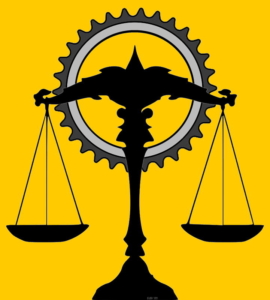Bicycle Safety and the Law: Quiz #3
How did you do on last month’s quiz? In case you missed either of the first two:
And now for this month’s quiz. Do YOU know the answers?
Questions:
- Who has to wear a helmet?
- You are driving a car and hit a cyclist. Does the fact that the rider was not wearing a helmet reduce your responsibility for their injury or (God forbid!) death? ✎
Answers:
- Oregon law requires all bicycle riders under the age of sixteen to wear an approved helmet while riding on a public path or roadway. This answer is provided by ODOT. That’s the simple answer, but the Oregon Bicycling Manual goes on to explain that all riders SHOULD wear a helmet, just for safety’s sake. And, of course, all of you know that wearing a helmet is a flat requirement for riding on any of our club rides. Beyond that though, the manual points out that helmets have a limited useful life – usually three to five years. On the inside of every helmet is a little sticker showing its manufacture date. It wouldn’t hurt for everyone to look inside your little skid lid to be sure your helmet is not past its useful life! Also, bicycle helmets are good for one, and only one, serious impact.
 If you make a non-standard dismount and hit your head, check the helmet for any deformation or damage. It might not protect you the next time and MUST (not should) be replaced. In addition, a helmet will not give adequate protection if it is not fitted properly or you don’t close the buckle. The helmet should rest comfortably so that it is about two-finger widths above your eyebrows. The internal harness should be tight enough that if you rotate the helmet slightly, your scalp moves with it but not so tight it is uncomfortable.
If you make a non-standard dismount and hit your head, check the helmet for any deformation or damage. It might not protect you the next time and MUST (not should) be replaced. In addition, a helmet will not give adequate protection if it is not fitted properly or you don’t close the buckle. The helmet should rest comfortably so that it is about two-finger widths above your eyebrows. The internal harness should be tight enough that if you rotate the helmet slightly, your scalp moves with it but not so tight it is uncomfortable. - The answer to Question 2 is that you are SOL (that means, “Sorry, but you are out of luck”). ORS 814.489 provides that: Evidence of violation of ORS 814.485 or 814.486 and evidence of lack of protective headgear shall not be admissible, applicable or effective to reduce the amount of damages or to constitute a defense to an action for damages brought by or on behalf of an injured bicyclist or bicycle passenger or the survivors of a deceased bicyclist or passenger if the bicyclist or passenger was injured or killed as a result in whole or in part of the fault of another.
Dave McQuery, Membership Secretary

